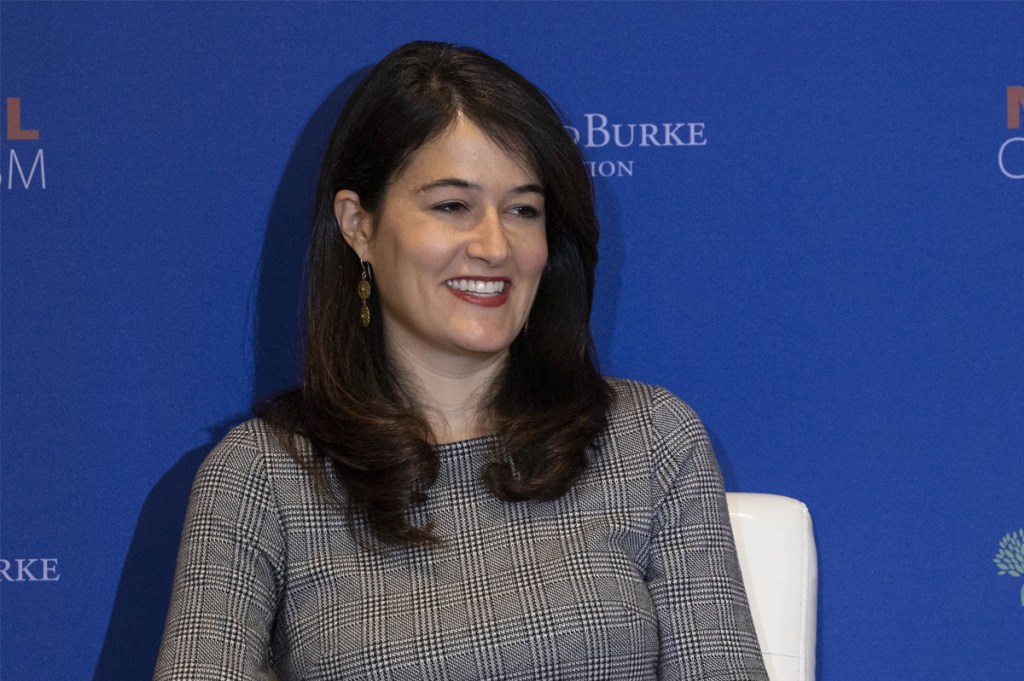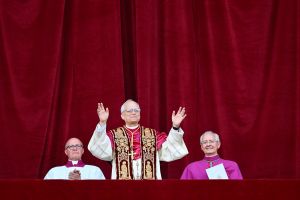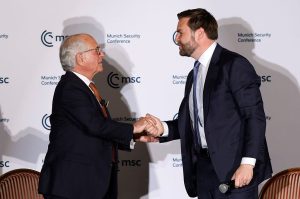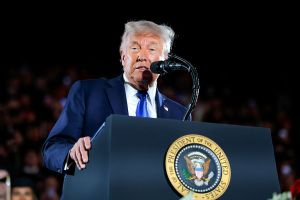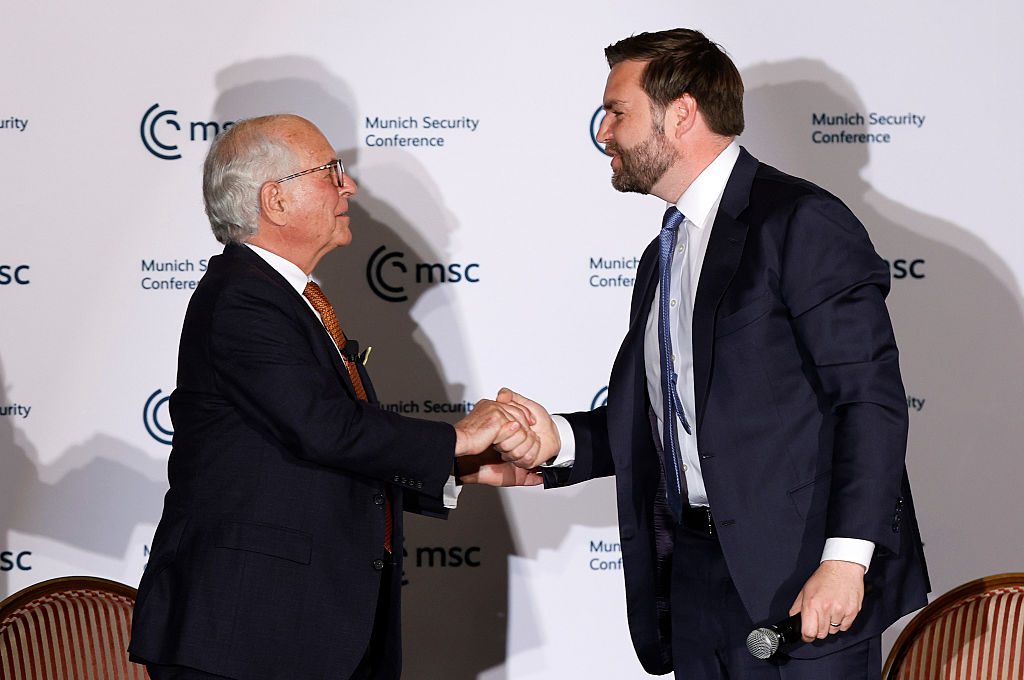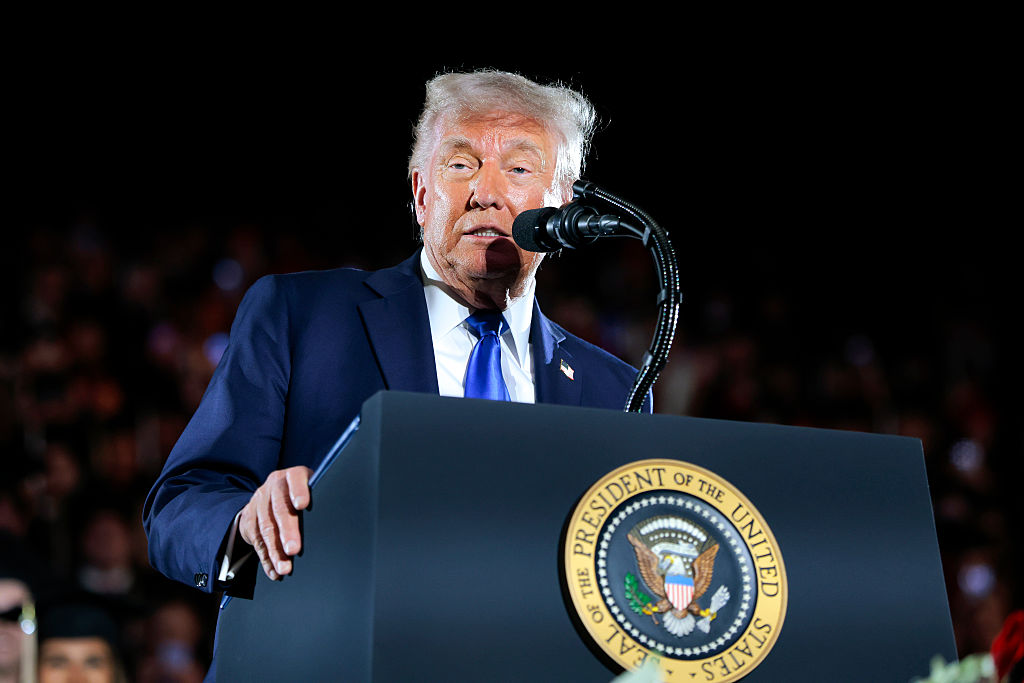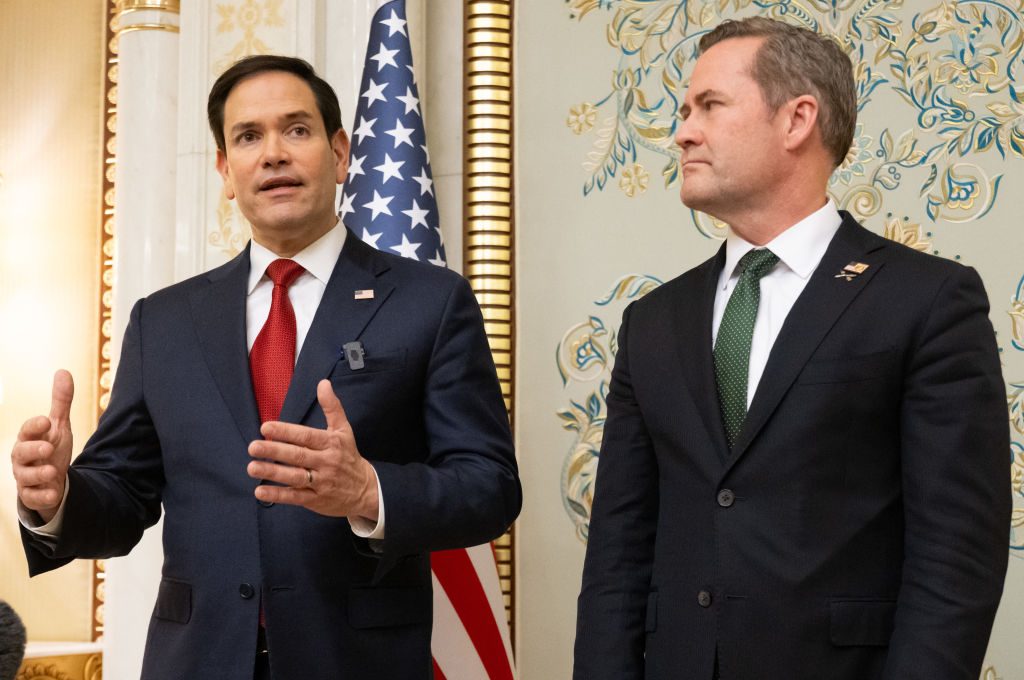I expected there might be some trouble at the National Conservative Conference, held earlier this week in Orlando. There had been omens. American Airlines flight cancellations had upended many attendees’ travel plans, with some unable to make it at all. I was fortunate enough to have booked on Delta, but was hit with a stomach bug as soon as I stepped on the plane.
A bad portent on a personal level, but more to the point, this wasn’t the first time I had been to a conservative event with high-profile — some would say controversial — speakers. Disruptions are fairly standard fare. Years ago, I saw Newt Gingrich, of all people, speak at the New School in New York City. Leftist activists pulled an old standard trick — yank the alarms and then concern troll to the media about how the organizers didn’t take fire safety seriously because they didn’t simply shut down the talk.
Perhaps more ominously, a fellow attendee tweeted, half-jokingly, that attendees should watch themselves: he had heard that there were to be 700 attendees at the event and 100 of them were members of the press. I tweeted back that I was attending with both a press pass and as a paying guest. “Wow, deep cover,” he responded. Always keep them guessing.
A conference staffer tacitly confirmed that the attendance figures weren’t far off base when I picked up my press pass. “We made the press lanyards bright red for a reason,” he quipped. This was not mere paranoia, if a bit unfair to the more scrupulous members of the credentialed press. In the past few weeks, there have been multiple instances of “MAGA infiltrators” attending conservative events in the guise of fellow travelers hoping to leave with wacky quotes.
I needn’t have worried. The conference, held at a perfectly nice, perfectly bland event hotel that could best be described as “beige modern,” was protected by both uniformed and brawny plainclothes sheriff deputies. There was to be no yanking of fire alarms this time. The real friction was to come from the working out of an idea, namely, national conservatism. If I was forced to simply describe that idea for someone like my blessedly apolitical mother, I’d say “the notion that in political considerations, the good of your own nation should come first.”
This brand of nationalism has been cast by some as a continuation of Trumpism. But there was scarcely a mention of the former president from the conference’s legion of speakers. Some, like the essayist Mary Eberstadt and the journalist John O’Sullivan downplayed the radical connotations sometimes connected to nationalism. The former, in a speech that served as an open letter recruiting young people to conservatism, argued that the only alternatives to nationalism are internationalism — focus on the good of other nations — or anti-nationalism — hatred of your own nation. The latter placed nationalism in continuity with the beliefs of venerable conservative figures like Churchill.
It would likely not have been Trump’s sort of haunt, anyhow. The conference was structured in a way that would’ve been familiar to anyone who has been to an academic symposium. There were plenary events, attended by everyone, followed by breakout sessions on more specialized topics during which a chair presided over four speakers. These were held three at a time, and somewhat frustratingly were of broad enough interest that I always felt like I was missing something: people who care about the drift of popular culture are likely the same people who would like to attend a panel on the status of the family. There were name-brand conservative figures on these panels; think tankers like Claremont Institute president Ryan Williams, journalists like Newsweek’s Josh Hammer, and cultural figures like the Babylon Bee’s Seth Dillon are a representative sample. But in keeping with the unassuming character of the event, speakers were listed in the program only by name, not affiliation.
Perhaps the most illuminating speech came from the up-and-coming conservative writer Rachel Bovard, who spoke on a panel seeking to define national conservatism. She did yeoman’s work in wresting the practical from the abstraction. As a reformed conservative academic, I appreciated that. As a man with a stomach bug attending panels like a ghost in the back of the room with reduced mental capacity, doubly so. Bovard laid down political planks for a new right that puts nation first and disempowers what she calls the woke elites: the US should withdraw from multilateral trade agreements that sap our sovereignty, incentivize the formation of families, break up big tech monopolies, and so on. She has published her remarks. They are worth reading.
There were some high wattage exceptions to the modest nature of the conference. Three senators — Hawley, Cruz and Rubio — spoke, with Rubio, a victim of American Airlines, relegated to a video appearance. Conference attendees on Twitter argued whether Cruz’s fiery speech, which made recourse to the Reagan Revolution, a passé idea on the New Right, was “based” or “cringe” — their parlance for “cool” and “lame.”
Ohio Senate candidate and author J.D. Vance, in a competent address against university radicalism, explained to a room of people mostly familiar with the slang of the New Right, what it meant to be “red-pilled,” an allusion to being awakened to the truth taken from the film The Matrix. Those in the room included writer Curtis Yarvin, often credited with popularizing the term. But perhaps the biggest surprise of the conference was an appearance by standout NBA star Jonathan Isaac, an African American who refused to kneel for the pledge of allegiance who has more recently made headlines over his refusal to take the league mandated coronavirus vaccine. Isaac sat in conversation with talk show host Dave Rubin, himself an apostate from leftism, and explained how his philosophical and religious journey brought him to speak before a room of people “who mostly don’t look like me.” He candidly expressed hopes that conservatives would make more of an effort to dialogue with people of color.
But overall, this was not a pep rally or a trade show. It was not CPAC. There were no ice sculptures. No merchandising booths. On the closing night of the conference, attendees hung out in the hotel bar to schmooze and watch the Virginia election returns. A young man pulled away the acquaintance I was chatting with and asked him to take his picture with Notre Dame professor Patrick Deneen. One senses the young interloper would’ve considered a ballplayer like Isaac a celebrity of far lesser luminance. J.D. Vance rubbed elbows like everyone else at the bar. I couldn’t resist asking him if he got to meet Amy Adams, the movie star who played his mother in the film adaptation. He gave me a smile and a clipped “yes,” but volunteered no more. It was only fitting. The conference had been about ideas, not star power.
On my way to the elevator, I ran into Adam Thompson, a visual artist and cryptocurrency investor from Miami who I had met earlier. With his long, bleached blond hair and his denim jacket covered in patches like a crust punk of old, Thompson stood out in the sea of navy sportscoats and sensible dresses. But he spent the conference cheerfully displaying his works, including a banana with the words “Let’s Go Brandon” written on it, for which he was jokingly asking $500,000, in simultaneous parody of the both the art world and the First Family. “What did you think of the conference?,” I asked. “Based,” he said.
Bill Zeiser is editor of RealClearPolicy.



